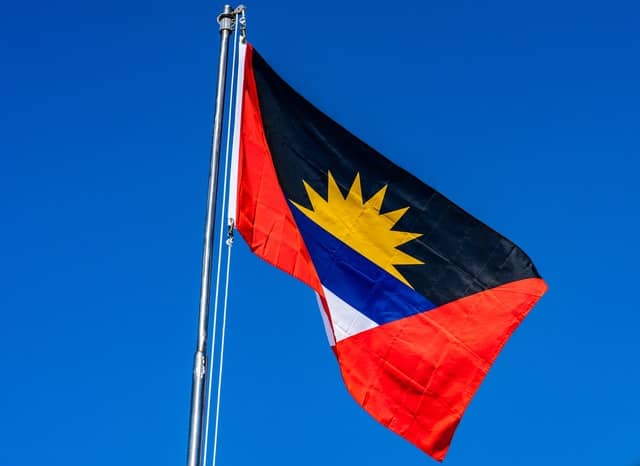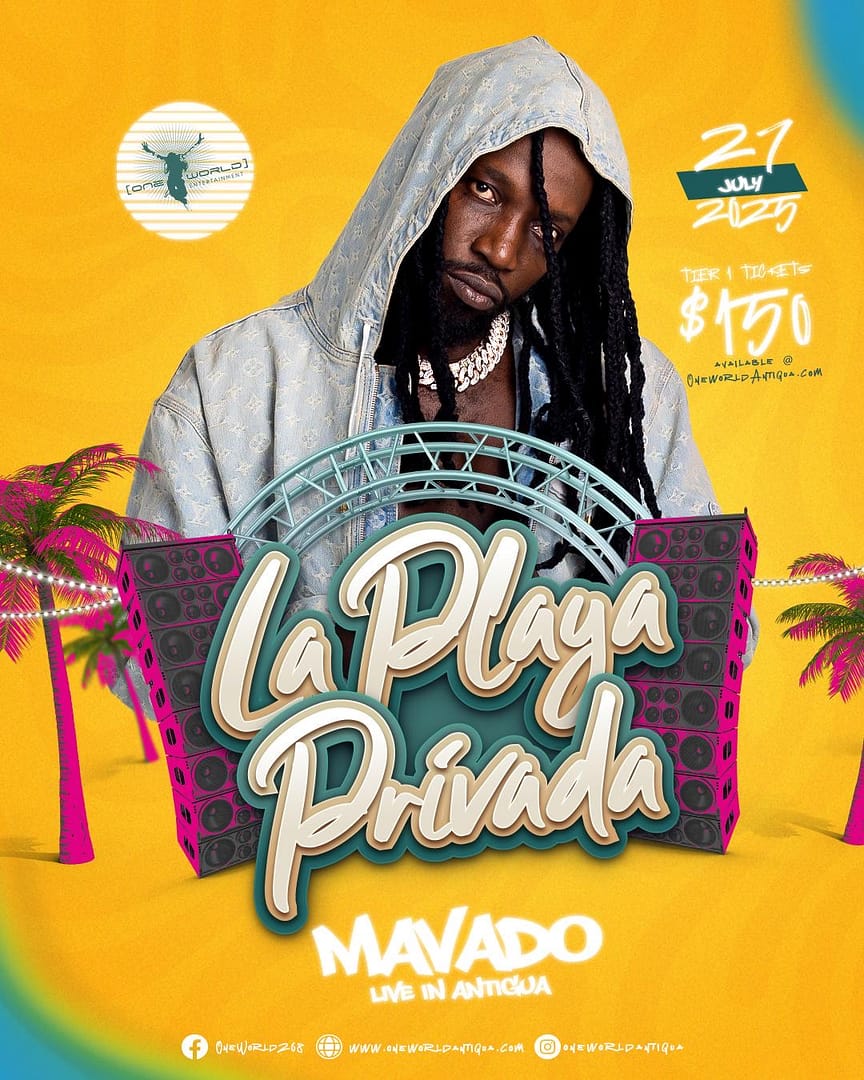Here are the 21 storm names for the 2025 hurricane season and why we name them
 26 March 2025
26 March 2025
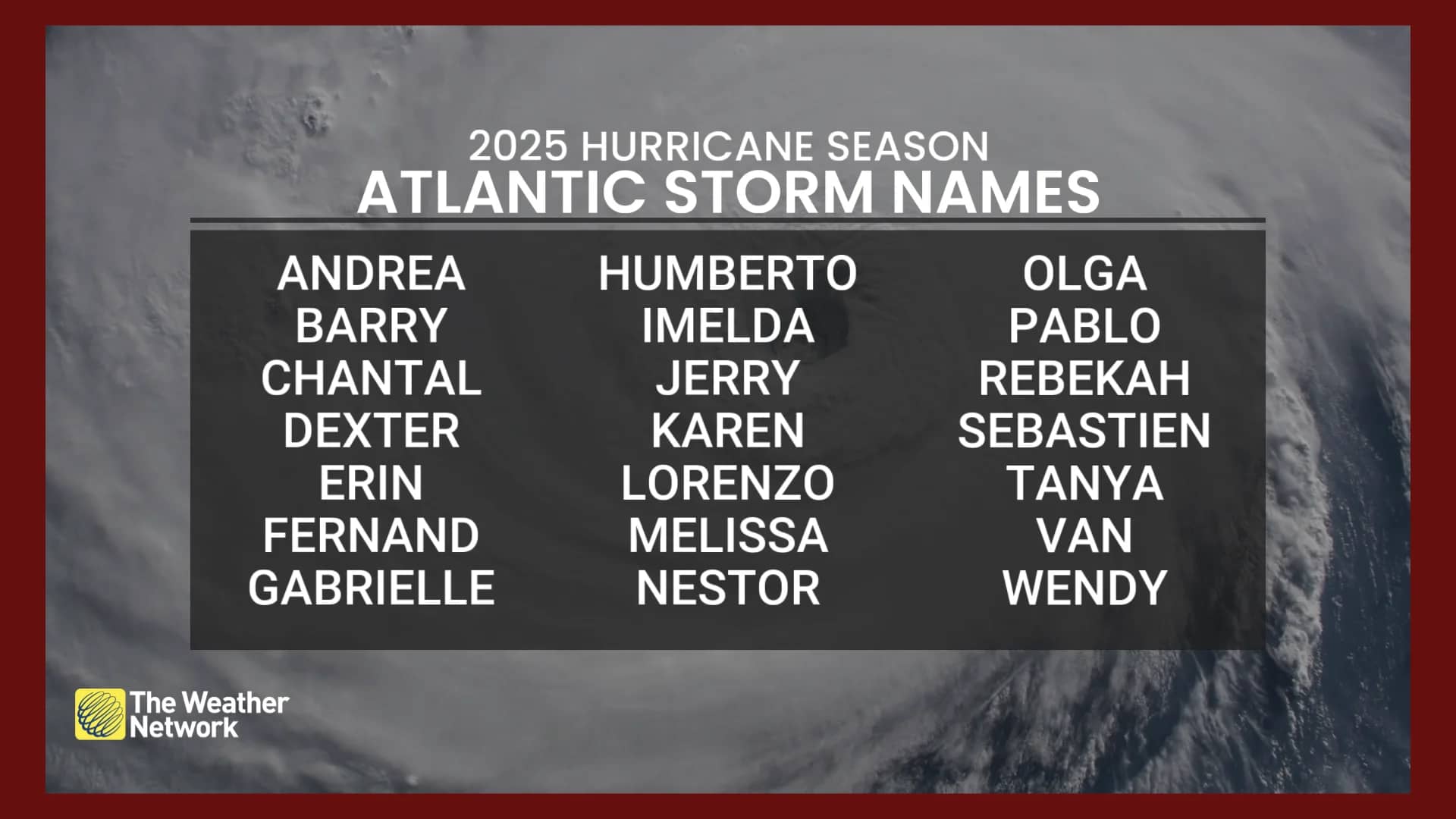

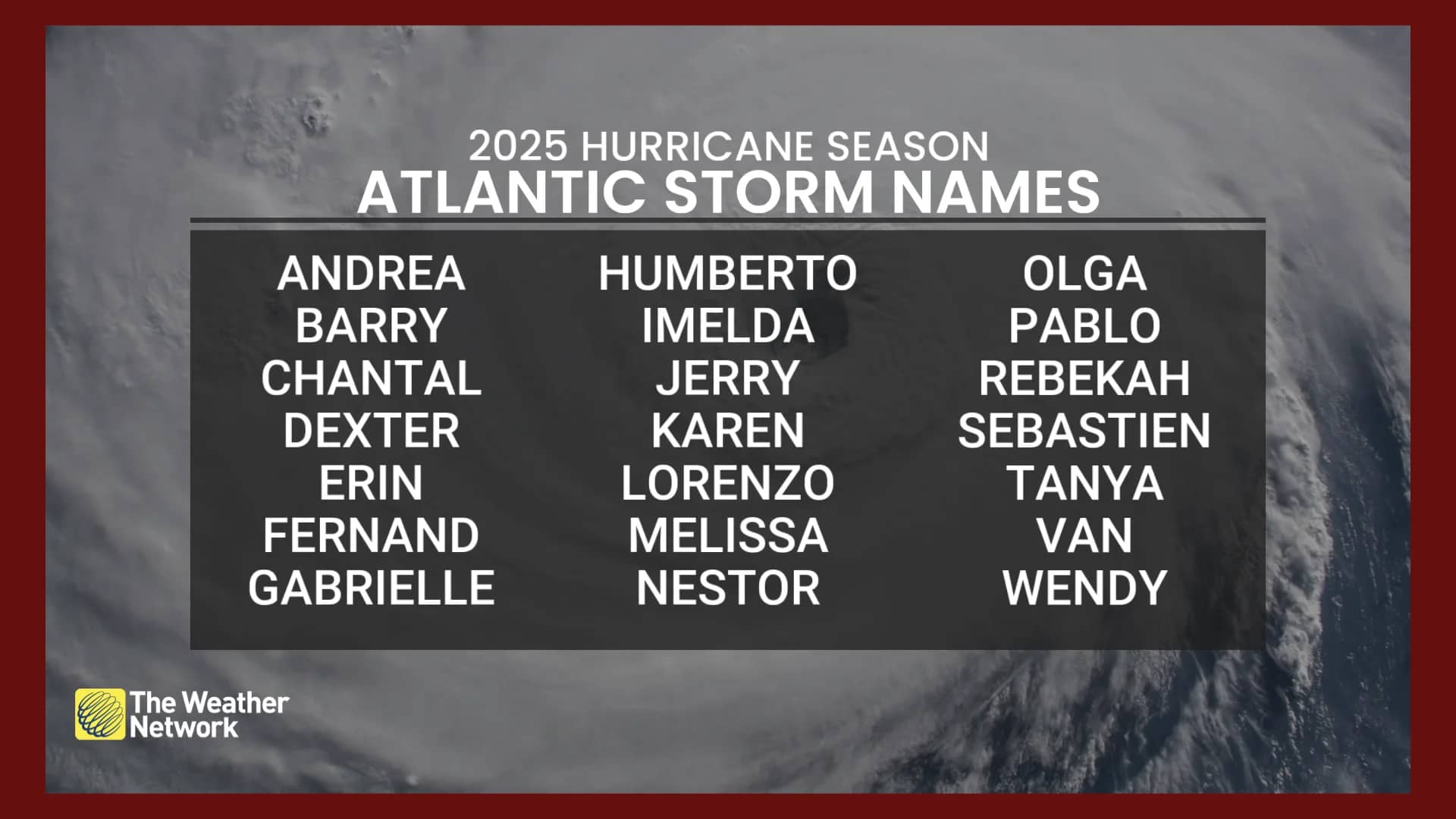
Early predictions for the 2025 Atlantic hurricane season are off to a positive start, at least compared to last year’s chaotic nature.
Meteorological consulting firm WeatherBell has predicted that we could see between 15-19 named storms during this year’s hurricane season, and we already know what their names will be, too.
The World Meteorological Organization is responsible for maintaining and updating hurricane names. It has currently produced a list through 2029, providing a list of alphabetically organized names from A-W, omitting the letters Q and U.
Here is the list of 2025 hurricane names: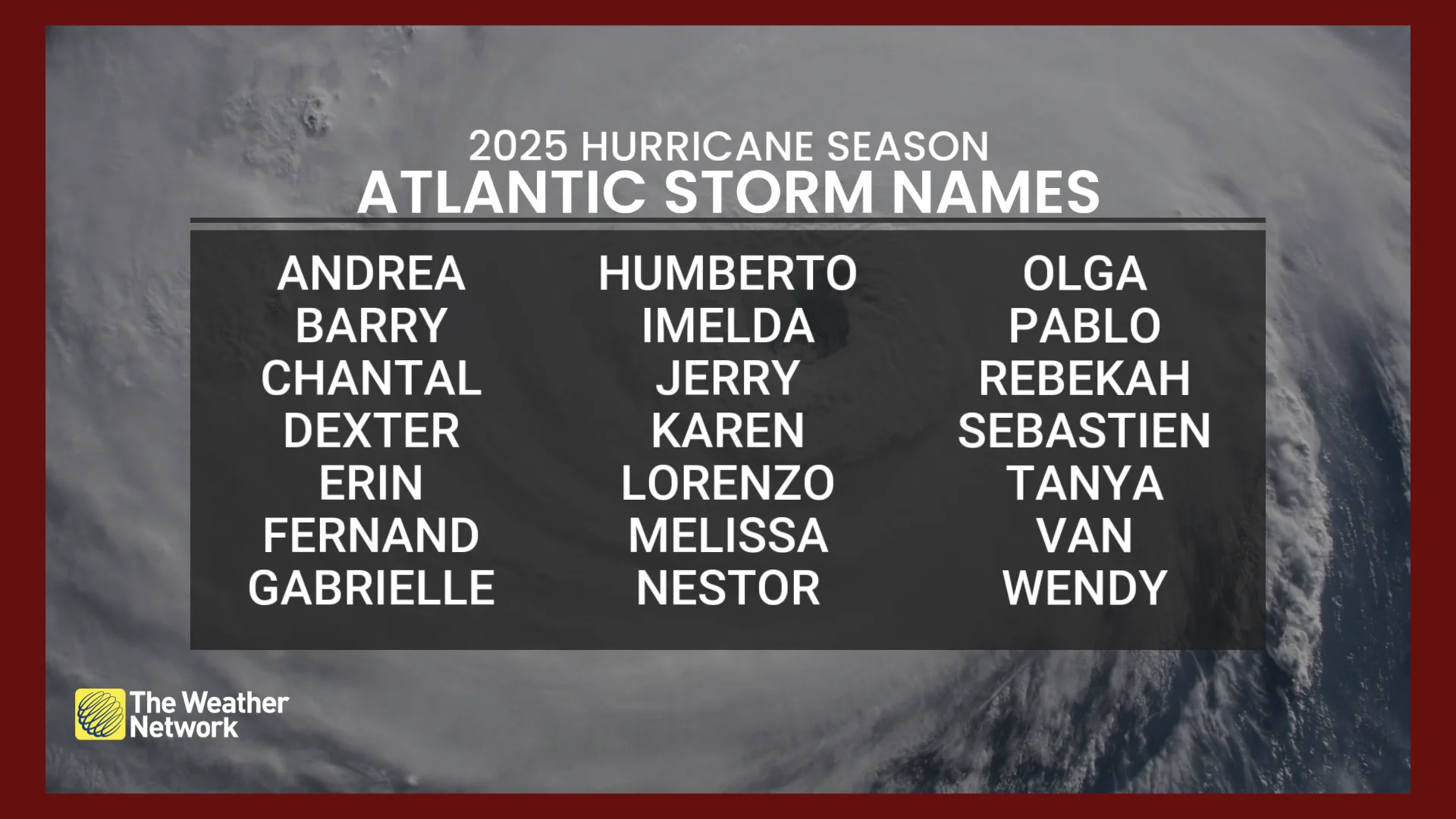
RELATED: Hurricane remnants can bring dangerous weather deep into Canada
Naming hurricanes might seem like a silly thing to do, especially considering their extremely destructive nature, but it serves an important and practical role.
We give hurricanes simple names because they play a major role in clarity, which is crucial during emergency situations. With hundreds of stations, coastal bases and ships scattered across the world, it’s much easier to exchange information using a name like “Ida” than it is Tropical Depression 13, which itself is easier than the older method of using longitude-latitude identifiers. Most importantly, it also reduces errors.
Content continues below
Using those shorter names is also helpful when communicating with the public. It can be hard enough to keep track of tropical waves, potential depressions and the like. A name clearly indicates to the public that the storm has risen to a level worth paying attention to.
The National Hurricane Center (NHC) provides a great example: “For example, one hurricane can be moving slowly westward in the Gulf of America, while at exactly the same time another hurricane can be moving rapidly northward along the Atlantic coast. In the past, confusion and false rumours have arisen when storm advisories broadcast from radio stations were mistaken for warnings concerning an entirely different storm located hundreds of miles away.”
Humans have used several methods throughout the years to name hurricanes. For several hundred years many hurricanes in the West Indies were named after the particular saint’s day on which the hurricane occurred, according to the NHC.
There were moments in history when hurricanes were given women’s names, notably by Australian meteorologist Clement Wragge before the 19th century.
The practice was furthered by U.S. Army and Navy meteorologists who plotted the movements of storms over the Pacific Ocean.
Afterward, the military tried to move to a plan that used the phonetic alphabet, but it was quickly abandoned in favour of strictly using the names of women for storms.
Content continues below
In 1978, we moved to using a mix of men and women’s names and have been doing so ever since.
An international committee called the World Meteorological Organization (WMO) is responsible for maintaining and updating hurricane names now, and it does so in batches of six years, with 21 names appearing each year.
Hurricane names are used in alphabetical order, with the first named storm starting with an “A”, the second starting with a “B” and so on. The names themselves have no meaning and are not related to any specific person.
Every name on each list is reused over and over in perpetuity unless the name is retired. Hurricane names are typically retired if they are associated with a storm that is so deadly or costly that the future use of its name on a different storm would be inappropriate, according to the NHC.
Astute observers will note that there are 26 letters in the alphabet, so why do we only use 21 names?
The WMO does not include the letters “Q,” “U,” “X,” “Y” and “Z,” leaving only 21 names. One of the reasons for the omissions is the limited number of names. Coming up with a single batch of names using each of these letters is difficult enough, but repeating the process five more times would produce some unusual names, which leads us to the next reason.
Content continues below
If we go back to the reasons we name hurricanes, coming up with a list of odd and uncommon names flies in the face of using names that are clear and concise.
You might have heard that we use Greek letters to name hurricanes in the rare event that we run through the list of 21 names, and that was true up until 2021.
Prior to the record-breaking 2020 Atlantic hurricane season, the WMO had already thrown around the idea of moving away from using the Greek alphabet for hurricane naming. When it was last proposed in 2006, it was determined that it was rare enough of an occurrence that it wasn’t necessary.
After 2020, the WMO decided to end the practice and establish two supplemental tropical cyclone lists: One for Pacific storms and the other for Atlantic.
Here are the supplemental hurricane names for the Atlantic:
- Adria
- Braylen
- Caridad
- Deshawn
- Emery
- Foster
- Gemma
- Heath
- Isla
- Jacobus
- Kenzie
- Lucio
- Makayla
- Nolan
- Orlanda
- Pax
- Ronin
- Sophie
- Tayshaun
- Viviana
- Will
We have run out of hurricane names twice. The first time happened in 2005, which was a record-breaking year that produced hurricanes Katrina, Rita and Wilma — whose names have all been retired. There were so many named storms in 2005 that we used six Greek letters.
The 2020 hurricane season was the second time it happened, and is the current record-holder for having the most named storms. There were 30 named storms in total, including Eta and Iota. Nine Greek alphabet letters were used in 2020.
Advertise with the mоѕt vіѕіtеd nеwѕ ѕіtе іn Antigua!
We offer fully customizable and flexible digital marketing packages.
Contact us at [email protected]
Related News
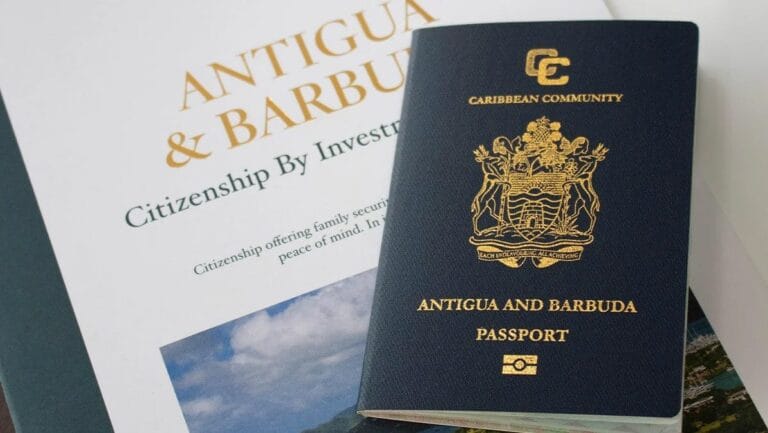
Antigua Cabinet Addresses U.S. Security Concerns Over CIP, Supports CARICOM Chair in OECS ...
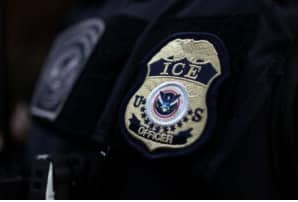
Trump strips Caribbean migrants of parole protections

Salim Browne Launches Initiative to Support Vulnerable Residents in St. George
